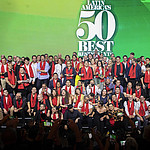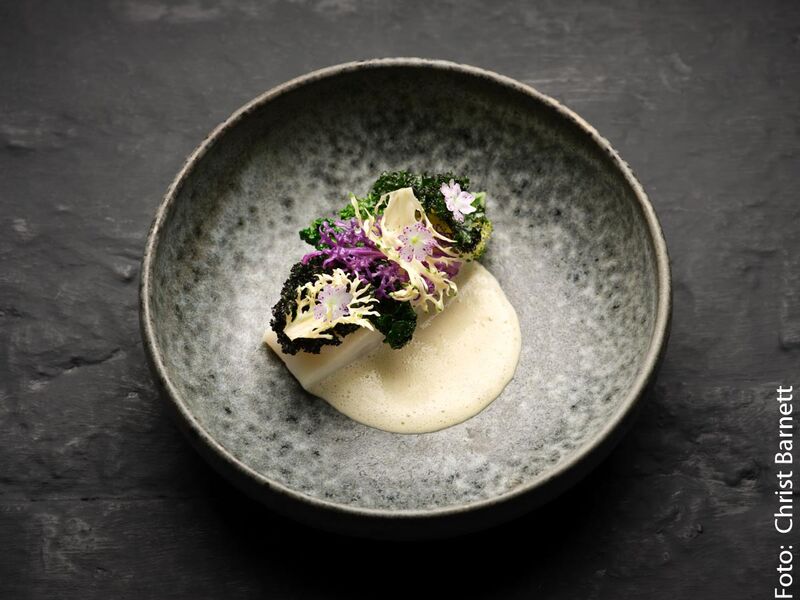
Restaurant world ranking list 2023
Which restaurant is the best in the world? This can only be answered by a restaurant world ranking list that is compiled according to objective criteria and is as up-to-date as possible.
Restaurant-Ranking.com has developed a calculation method that fulfils these requirements as far as possible. The list is based on our many years of expertise in analysing restaurant guides from all over the world. In addition, our ranking list is updated several times a year.
Restaurant world ranking list: Guides and guest reviews as a basis
We have based our restaurant world ranking on as broad a basis as possible. The scores from all the restaurant guides that we analyse for our country rankings are taken into account. We also take into account the scores from guests on the major online review portals.
Restaurant-Ranking.com has always specialised in compiling and comparing ratings from different restaurant guides. We have also utilised this expertise in the calculation of our restaurant world rankings. When calculating our ranking, we take into account the four best scores per restaurant in the current restaurant guides for a country. An average value is then calculated from the scores. In addition rankings in The World's 50 Best list and the Le Chef Top100 list, as well as the Elite Traveller Top100 list, are taken into account and counted as a top score in a restaurant guide. If two or more restaurants achieve the same average score, the average scores from guests on the major online review portals determine the ranking. This means that the ranking is determined more objectively than other lists based on votes from individuals.
The restaurant world ranking list is updated several times a year so that the scores from the latest editions of the restaurant guides are always included in the ranking. Of course, this calculation method is not free from distortions. If restaurant guides in one country largely agree on top marks and are more generous with top marks than in other countries, restaurants from these countries have a certain advantage. In our view, however, this bias is significantly less than the fundamental problems of lists based on jury votes.
The World's 50 Best list
Lists based on votes by juries are very well known and have a lot of PR power. The best-known example is The World's 50 Best Restaurants List, also known as the Pellegrino List. But how meaningful are such lists? Even the most hard-working jury members can only eat at a manageable number of restaurants each year, especially as they would theoretically have to go on a culinary trip around the world every year to get a global overview of the latest developments. In addition, the voting members are divided into regional juries, each of which is responsible for a part of the world. When voting, they are only allowed to cast some of their votes for countries from their own region. This structurally favours the top restaurants in regions where there are only a few top restaurants. These restaurants are then likely to collect the votes of many jury members, while in regions with many top restaurants the votes are spread over a larger number of restaurants. For example, restaurants in South America make it onto the list more quickly than a top French restaurant. The extent to which a restaurant's position on the Pellegrino list depends on its location and proximity to a number of other highly rated restaurants can be seen in the example of the Danish Noma, which topped the Pellegrino list several times and was therefore widely regarded as the "best restaurant in the world". As jury members obviously travelled to Copenhagen primarily to dine at Noma, other restaurants in Copenhagen also moved up the Pellegrino list. When Noma closed for its move, all other Copenhagen restaurants dropped down the Pellegrino list the following year. In other words, this list says more about which restaurants and which city or region are currently "in". However, there is no correlation between ranking and quality in the list. In addition to the world list, a 50-best list is published annually for Asia, Latin America, the Middle East and North Africa
Restaurant World Ranking Japan
Le Chef list: Michelin-starred chefs vote for the best chefs
An annual poll organised by French magazine Le Chef among chefs who have been awarded two or three Michelin stars regularly attracts a lot of attention. Michelin-starred chefs certainly have in-depth expertise to judge the performance of restaurants. However, due to their workload alone, it is unlikely that they can assess the quality of several hundred restaurants from personal experience. In addition, personal loyalties to chef friends and former chefs can influence voting behaviour. In addition, some parts of the world have a higher density of restaurants with two or three stars. This regional disparity is of course also reflected in voting behaviour. It is therefore not surprising that French restaurants in particular do well in this list. This ranking is therefore more likely to represent the reputation of a restaurant or chef in the professional world.
Find out more about the Le Chef list
Opinionated about Dining (OAD)
The list is based on the scores of users registered on the Opinionated about Dining portal. These users can write grades and short review texts for restaurants. According to the operators, 6,000 people contributed to the 2019 rankings,
To the current OAD list for Europe
La list
The ranking comprises 1,000 restaurants and takes into account the scores of professional guides and review portals. The scores of the guides are taken into account with 90% and user reviews with 10%. In total, there are more than 1,300 restaurants on the list that achieve more than 75 out of a maximum of 100 points.
At a glance: How meaningful are restaurant world rankings?
| Do you have any questions? | Restaurant-Rankings.com country rankings | Restaurant-Rankings.de world ranking | La Liste | The World's 50 Best | OAD Ranking | Le Chef Ranking |
|---|---|---|---|---|---|---|
| What data is the ranking based on? | Scores in professional restaurant guides | Notes in professional restaurant guides and notes on review portals | Notes in professional restaurant guides and notes on review portals | Voting among an international jury of experts | Reviews by users of the portal | Voting among two- and three-star chefs |
| How is the data weighted? | According to the importance of the restaurant guide (the stricter the score, the more valuable it is). The worst score is cancelled. Special points for good service, wine list, etc. | The scores from four professional restaurant guides, alternatively from professional rankings. In the event of a tie, the average score in user portals such as Tripadvisor, Foodblogger and similar is used | Not fully transparent conversion of the scores from guides into a percentage. Weighting of the scores according to the trustworthiness of the guides based on a survey of experts. Ratings on user portals are included in the result at ten per cent. | The world is divided into different regions. Each person with voting rights may only rate a certain number of restaurants in their home region | The more ratings a user submits, the more weight the rating has | n/a. |
| Updating | several times a year | several times a year | annually | annually | annually | most recently in 2020 |
| Weaknesses of the ranking | Discrimination of new openings that are only gradually mentioned in all restaurant guides. | Advantage for restaurants in countries where there are relatively many guides, especially if they agree on the rating of the restaurants. In the case of user ratings, the visit does not necessarily have to have been in the last twelve months | High influence of ratings in user portals. Due to the annual calculation, the data is quickly outdated. | The layout of the voting regions and the selection of jury members have an influence on a restaurant's chances in the ranking. No comprehensive tests. Limited control over whether the restaurants have actually been visited. | There is a ranking for "modern" and "classic" restaurants, the categorisation of which appears arbitrary. No control over whether the ratings are based on actual visits over the past twelve months. | Loyalties and friendships between chefs, as well as their personal travel preferences, influence the result |
| How meaningful is the list? | The quality of a restaurant is evaluated according to the standards of the restaurant guides | The quality of a restaurant is evaluated according to the standards of the restaurant guides with little influence from the scores on review portals | The quality of a restaurant is evaluated according to the standards of the restaurant guides with some influence from the scores on review portals | The list says little about the quality of an individual restaurant. Rather, it provides information about which regions and which styles of cuisine are currently "on trend". | Broad base ensures comprehensive consideration of restaurants. The lack of control of the data and the weighting of the votes can lead to distortions. | Says something about the status of a restaurant in the professional world of chefs. |
Latest news on new country rankings






![[Translate to English:] Odette](/uploads/tx_rrrestaurants/_processed_/8/f/csm_ODETT_fotkl_restoin_19-06_87e64560e5.jpg)




![[Translate to English:] [Translate to English:]](/fileadmin/_processed_/b/e/csm_20230217-Jan_Hartwig_JAN__c__Fritz_Buziek_137941f077.jpg)



![[Translate to English:] [Translate to English:]](/fileadmin/_processed_/a/b/csm_arnaud_donckele_bef637b7f0.jpg)
![[Translate to English:] [Translate to English:]](/fileadmin/_processed_/8/9/csm_20221116-Tohru_Nakamura_4725a45a1a.jpg)
![[Translate to English:] [Translate to English:]](/fileadmin/_processed_/8/a/csm_20210605-Edip_Sigl_Eroeffnung_ESSENZ__2__845784872b.jpg)











